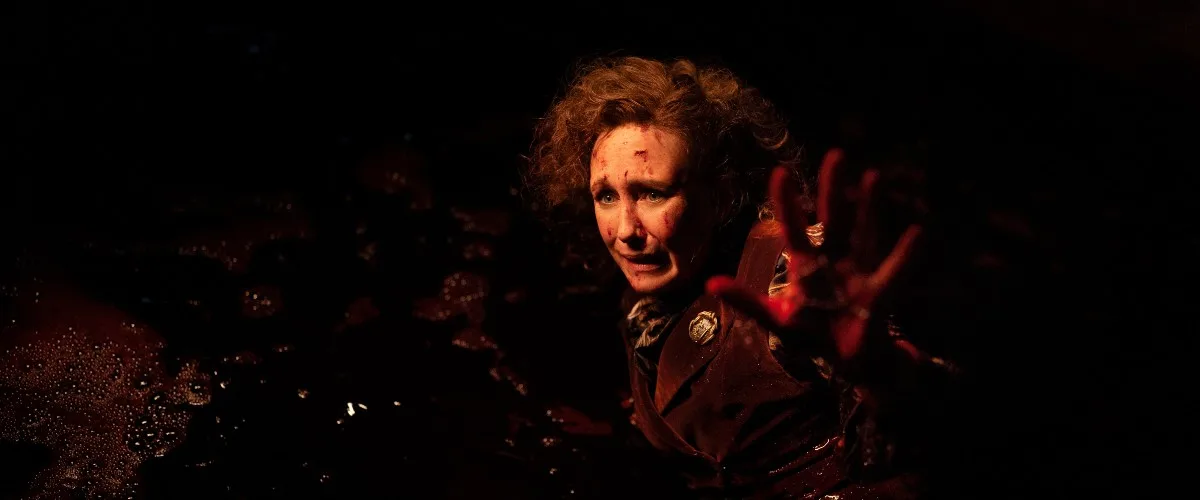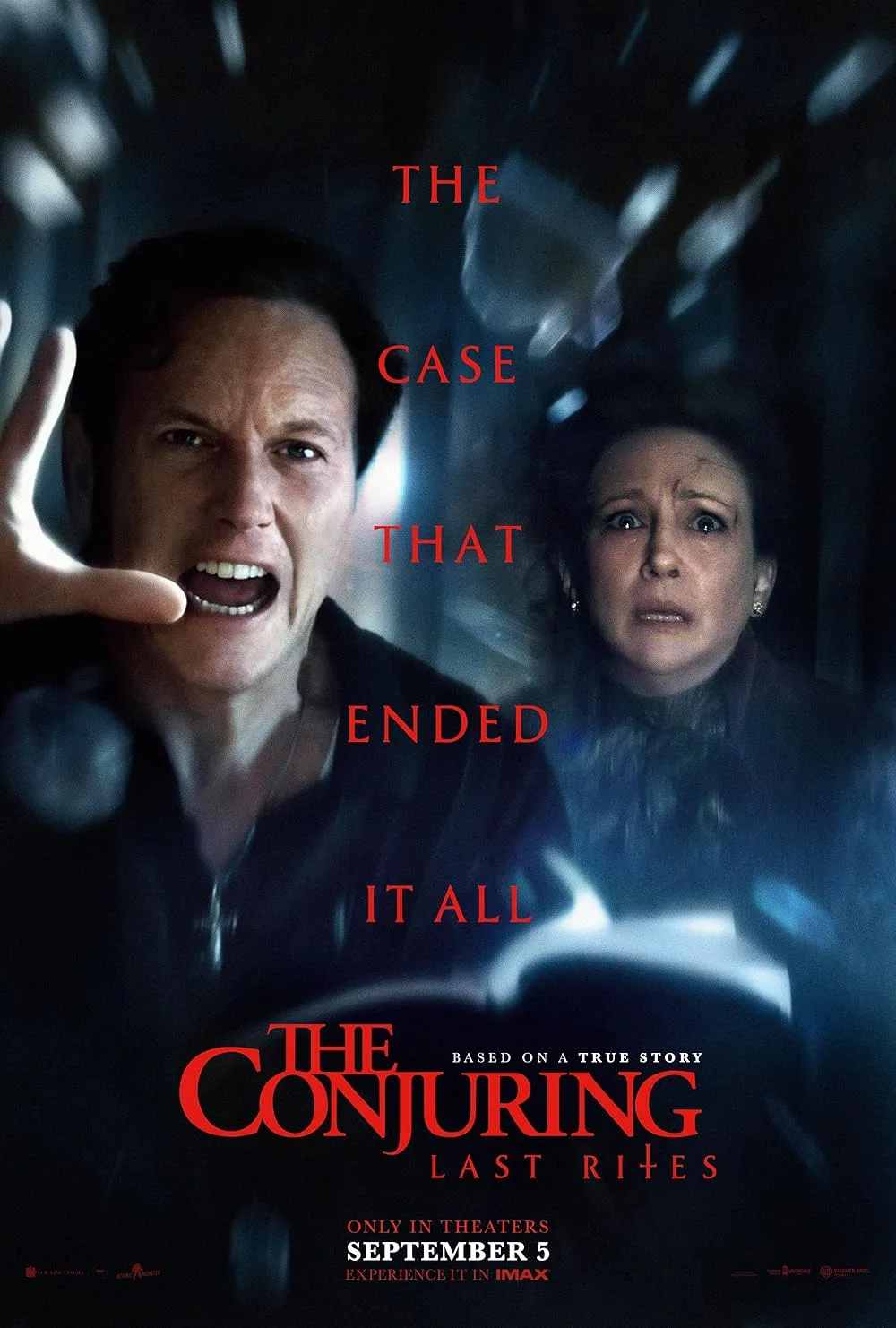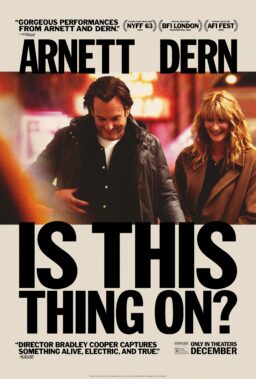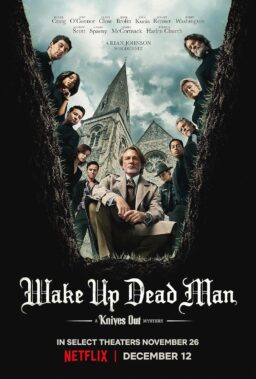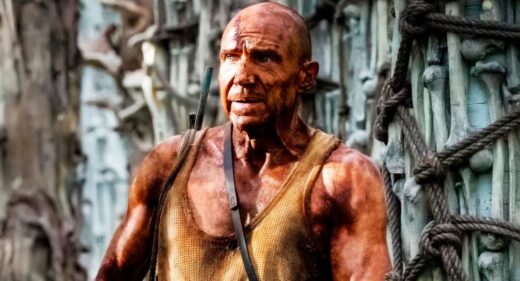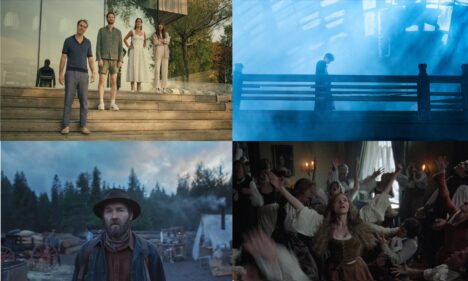It’s hard to believe that a franchise as lucrative as “The Conjuring,” with its assorted spinoffs, is serious when it advertises its latest entry, “Last Rites,” as the final adventure of its two founding heroes, married parapsychologists Lorraine and Ed Warren (Vera Farmiga and Patrick Wilson). At least the movie is aware of our skepticism and suggests a way to keep going without seeming like they’ve gone back on their word: this is a stealthy version of a so-called legacy sequel, setting up new characters to whom the narrative torch can be passed, namely the couple’s supernaturally attuned daughter Judy (Mia Tomlinson) and her new boyfriend Tony Spera (Ben Hardy), who’s meeting the folks for the first time when the tale begins. They all become embroiled in the investigation of a haunting in industrial Pennsylvania that involved multiple possessions of objects, multiple apparitions, and (in this fictionalized retelling, anyway) a connection to the couple’s early days.
The movie begins with a flashback to 1964. Ed and Lorraine are investigating a case involving a haunted mirror that triggers Lorraine’s labor and sends the couple into a vortex of supernatural horror that nearly causes them to lose Judy as an infant. The savvy viewer knows that there would be no reason to back-engineer this kind of plot tidbit and not pay it off later, so we wait patiently for the moment when we figure out how, exactly, it will come into play in the present day. Sure enough, it does, and in a way that amplifies fans’ already great affection for the main duo, fills out the personalities of their successors, and might make us think about the “Final Destination” movies, wherein every plot is about how you can’t cheat death because he always comes around to collect what is owed.
This movie is set later than any others on the timeline, in 1986. It focuses on a case that came up after the Warrens had officially retired from doing on-site investigations, mostly because Ed has been diagnosed with heart problems, a serious liability in a job where ghosts and demons are constantly popping up and shrieking and throwing things and trying to possess you and push you down flights of stairs. Warrenologists will know that the real Ed Warren did have a heart condition, which factored into the couple’s semi-withdrawal from the business, and that ended up killing Ed, and that Tony ended up sort of taking over the family business, including the Warrens’ room full of accursed objects collected in the course of their work. All of that is dealt with in this movie, though not in a direct way.
There are no spoilers here, so don’t worry. We won’t even get into the particulars of the plot and how it connects to the past, because the present-day investigation is rather perfunctory compared to others in the series. Except for one of two teenaged daughters in the haunted family, nobody else in the house is developed in much detail, certainly not as fully as Lili Taylor’s character in the original.
No, the main show has to do with Ed and Lorraine and Judy and Tony, and the domestic details of their lives as an outsider good-naturedly tries to join a tight-knit trio of special people. Judy has her mother’s gift and sometimes sees it as a curse. She loves her parents but would like to have something like a “normal” life, whatever that means, though of course by the end she’s embraced her talents and joined forces with her parents and her future husband to beat back the forces of evil. Tony, meanwhile, has to prove himself all through the movie, mainly to Ed, an intelligent and sensitive person who nonetheless carries the stoic tough guy values so common to men of his generation. A painting of John Wayne hangs on the wall of one of the film’s key locations. It never comes to life, thank goodness (though Mel Brooks would’ve gone there). But it does haunt the movie, in a sense, because it’s a constant reminder of the image of masculinity that Ed can never fully reject, even though he’s too kind and sensitive to fully embody it.
Michael Chaves, who has directed three previous entries in the franchise, is behind the camera here, and it’s fun to see the visual changes from the James Wan days. Most of the film is shot with a hand-held camera, with shallow planes of focus, which makes it feel somehow more “eighties” and also lends a bit of a home movie sensibility even to the most terrifying moments. Cinematographer Eli Born, a name worth watching in the future, also makes superb use of low-resolution 1980s-era home videotapes and surveillance devices, helping the director hide hideous images in seemingly mundane compositions and revealing them only when a character has begun studying them.
The extraordinary performances of Farmiga and Wilson have been the main show from the start, and the aspect that makes this franchise stand apart from so many others in the horror genre. Farmiga is the main attraction. She has impeccable craft and brings it to bear in every project, even when she’s stick in an underwritten role. But she also radiates a life force so specific and intense that you believe it when she plays a character who sees, feels, and understands more than almost anyone else around. She’s the kind of actress that, back in the day, Ingmar Bergman would have written roles for.
Wilson is just as impressive, though in a more delicate register. Ed is Dr. Watson to his wife’s Sherlock Holmes, which is not to say that he’s a caretaker and sounding board (though he is, just as Lorraine is for him), but that he brings a different but complimentary skill set to the job (the real Warren was the only non-Catholic authorized by the church to do exorcisms) and a physical resilience that comes in handy when implied threats turn into violent actions. You can feel the love between the characters, which intertwined through the years with the performers’ obvious respect for each other’s gifts.
This isn’t one of the all-time great “Conjuring” movies in terms of the supernatural elements—Ed and Lorraine don’t even set foot in this film’s haunted space until halfway through the story, almost like how Max von Sydow’s priest only shows up in the original “The Exorcist” after every other possible option has been exhausted. But once they are in, they’re really, really in. The climax of “Last Rites” is as tense and unsettling as you want to be, but it’s also warm and inspiring, because unlike a lot of movies that sell the idea of families being stronger when they all work together, this one totally believes in it and sells it with all the skill and emotion it can muster.

